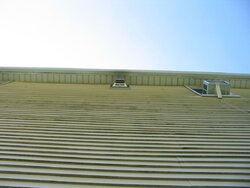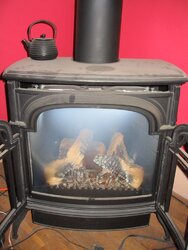I have a Vermont Castings vented gas fireplace heater model SDV30RF. It's a direct vent.
I'm on the 3rd floor of a condo building.
I bought the heater used and was installed in March 2010 and I pulled a permit.
The heater served me really well last winter. It heated up my whole 535-square feet condo. I love it.
However, three days ago I noticed that there was some soot just above the vent on the vinyl siding and below the gutter on the roof.
Is this normal? My concern is that the vinyl siding is going to get darker from the soot once I begin using the heater when it gets cold. The condo board will in turn have me address the issue.
I have also included a photo of the heater. The glass appears clear except that a part of it has a whitish or foggy look.
Any suggestions as to what (if anything) is wrong and what to do? Should I call a technician or plumber?
I'm on the 3rd floor of a condo building.
I bought the heater used and was installed in March 2010 and I pulled a permit.
The heater served me really well last winter. It heated up my whole 535-square feet condo. I love it.
However, three days ago I noticed that there was some soot just above the vent on the vinyl siding and below the gutter on the roof.
Is this normal? My concern is that the vinyl siding is going to get darker from the soot once I begin using the heater when it gets cold. The condo board will in turn have me address the issue.
I have also included a photo of the heater. The glass appears clear except that a part of it has a whitish or foggy look.
Any suggestions as to what (if anything) is wrong and what to do? Should I call a technician or plumber?



